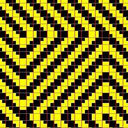Cloning and expression of the sucrose transporter gene PsSUT1 from tree peony leaf.
Palabras clave
Abstracto
This study reports the cloning of a sucrose transporter gene, PsSUT1, from the leaf of tree peony (Paeonia suffruticosa Lind. cv 'Huhong'). Expression patterns were examined in different organs and at different developmental stages. The full-length cDNA of PsSUT1 consisted of a 2001-bp sequence containing a 1557-bp open reading frame, encoding 519 amino acids with a conserved domain typical of the glycoside-pentoside-hexuronide superfamily. The amino acid sequence of PsSUT1 in tree peony shared high homology with that of other plants. At different developmental stages, PsSUT1 was expressed in roots, stems, leaves, and petals. Its expression level in stems was 10.9-fold higher than in petals at the flowering stage. Expression of PsSUT1 at the flowering stage was highest during flower development. The significant differences in PsSUT1 expression observed among developmental stages and organs were closely related to changes in sucrose content during flower opening. These results form the basis for further research on the molecular mechanisms of carbohydrate metabolism and transport during flower development in tree peony.



